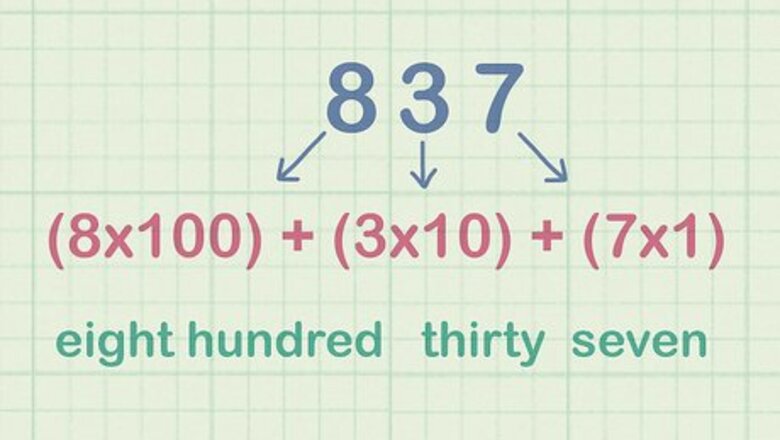
views
Learning about Place Value

Recall the ones, tens, and hundreds places. It can help to quickly go over the place value for whole numbers before thinking about place value for decimals. Every digit in the ones place represents one whole (i.e. 7 is the same as 7 ones). In the tens place, every digit represents ten wholes. For example, the number 30 is 3 tens. Every digit in the hundreds place represents one hundred wholes. So the number 837 is 8 hundreds, 3 tens, and 7 ones, which we call eight hundred thirty-seven. Every time you move right in the number, the place value gets 10 times smaller.
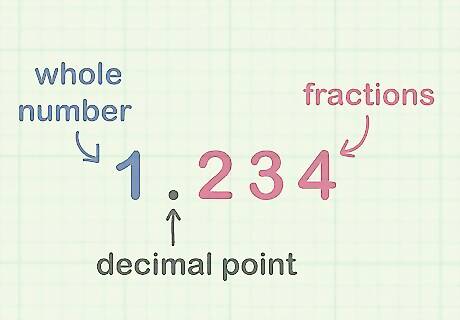
Understand what a decimal point is. The decimal point separates the whole number from the decimal value. Numbers after the decimal point represent fractions, or parts of numbers. Just like on the other side of the decimal point, the numbers get 10 times smaller every time you move right a place value. For instance, 0.1 is ten times bigger than 0.01, which in turn is ten times bigger than 0.001, just like how 10 is ten times bigger than 1.
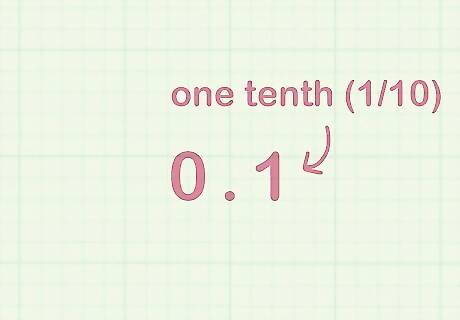
Note that the tenths place is the first place after the decimal. The number 0.1 represents one tenth. Each time you move to the right, the number is 1/10 as big as the previous number, which is why 0.1 is ten times smaller than 1. In the US, a dime is one-tenth of a dollar, or $0.10. Coins can be a helpful way to think about decimals.
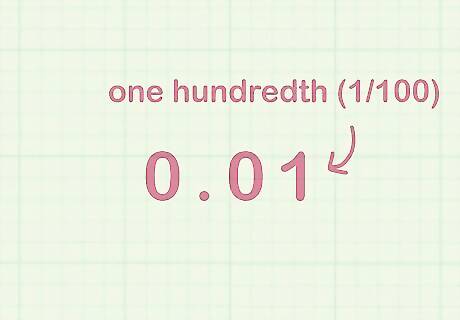
Recognize the hundredths place as the second place after the decimal. 0.01 is one hundredth. A hundredth is 1/100 of a whole, so it would take a 100 hundredths to make 1. A penny is one hundredth of a dollar, or $0.01.
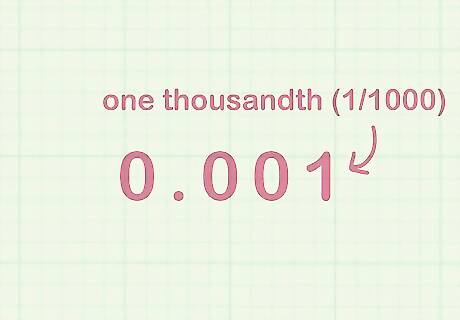
Learn that the thousandths place is the third place after the decimal. The number 0.001 is one thousandth. One thousandth is 1/1000 of a whole. Imagine splitting a whole into 1,000 pieces and taking one of those pieces—that would be one thousandth. If you took four pieces, 0.004, that’s four thousandths. When you’re just learning decimals, you might stick with just the tenths and hundredths place. The thousandths place will be useful later on, though.

Ignore zeros if they are at the end of the decimal. For example, 0.5, 0.50, and 0.500 represent the same value, so you can just ignore the ending zeros when writing the decimal in words. Don’t ignore zeros in the middle of the decimal though. For example, 0.03 and 0.3 are very different numbers. If you’re confused about why you can ignore zeros at the end, think of the decimals as fractions. 0.5 is 5/10, 0.50 is 50/100 and 0.500 is 500/1000. All of those are the same fraction, ½.
Writing out the Number
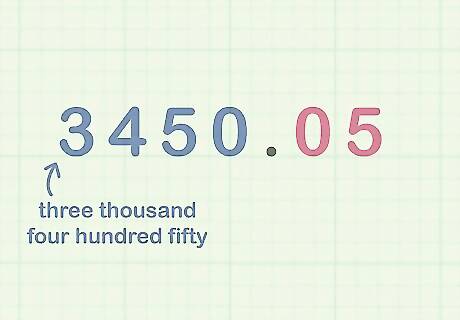
Write out the whole number normally. For the part of the number before the decimal point, write it out as you usually would. You have to remember place value when you are writing whole numbers. For example, 3,450.02 would be three thousand four hundred fifty and two hundredths.

Put down “and” for the decimal point if it comes after a whole number. For example, if the number is 40.05, write “forty and five hundredths.” Most teachers prefer that you write “and” instead of “point.” The word “and” helps people know that you are switching from whole numbers to parts of numbers.
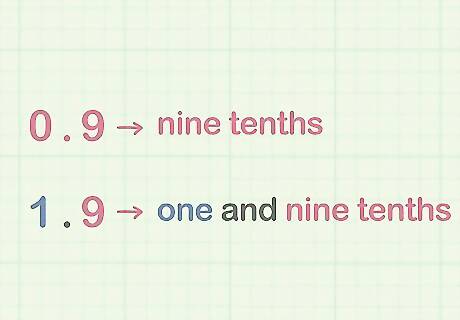
Note that you don't write "and" if the number is less than one. When writing decimals that have a zero in the ones place, like 0.2 or 0.017, don’t write “point,” “and” or anything else. Just start writing the number. For example, write 0.9 as nine tenths, whereas 1.9 is one and nine tenths. You don't need the word "and" to mark the transition between whole numbers and decimal numbers in numbers less than 1 because there is no transition.

Write the numbers after the decimal point as a whole number. For example, write .052 as “fifty-two thousandths.” Similarly, 0.52 is "fifty-two hundredths." No matter how many zeros there are before other numbers start, you still write it the way you would write a whole number. Don’t write the word “and” other than to represent the decimal point. For instance, write .103 as one hundred three thousandths, not one hundred and three thousandths.
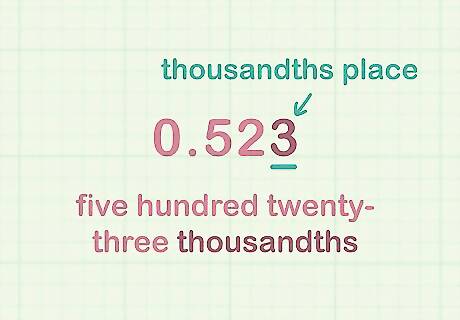
End with the place value of the last digit. For example, the number 0.003 is three thousandths, because 3 is in the thousandths place. Alternatively, 0.523 is five hundred twenty-three thousandths because it also ends with the thousandths place. The number 0.92 is ninety-two hundredths. Remember to ignore zeros at the end of decimals. Write 0.890 as eighty-nine hundredths, not eight hundred ninety thousandths.

Hyphenate if the last 2 digits are expressed in 2 words. For example, write 0.32 as thirty-two hundredths with a dash between thirty and two because 32 is written in 2 words. On the other hand, write 0.12 as twelve hundredths because 12 can be written as just 1 word.














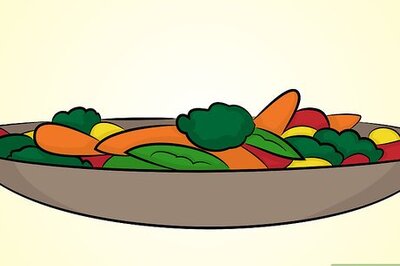

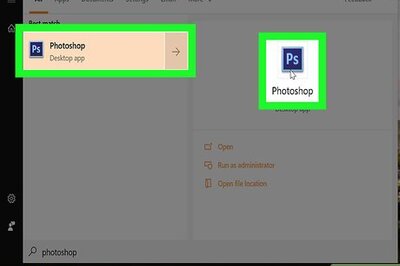

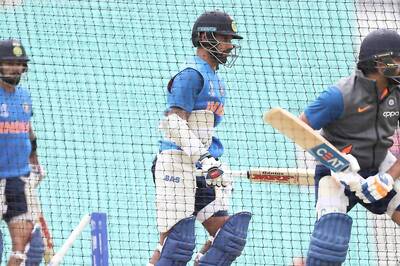
Comments
0 comment